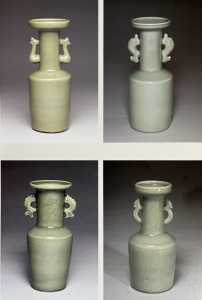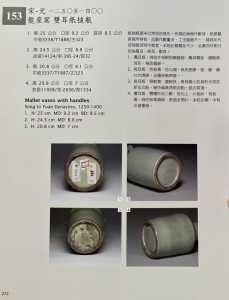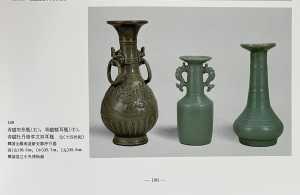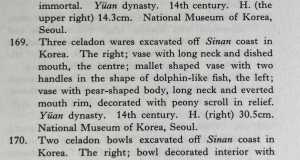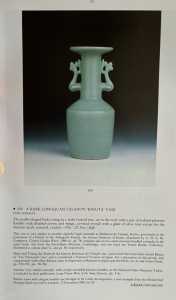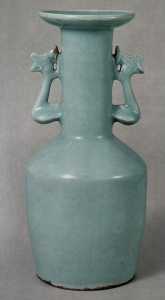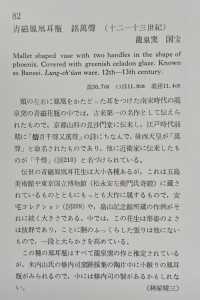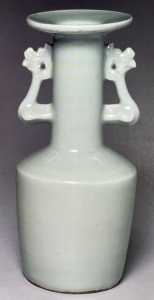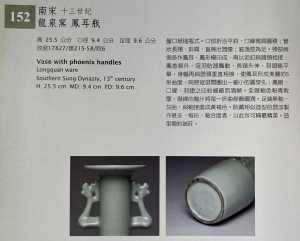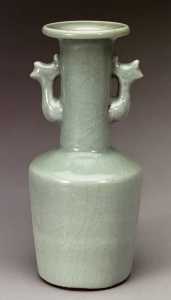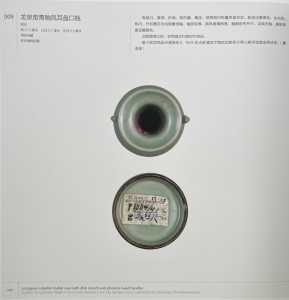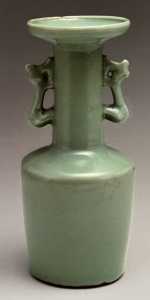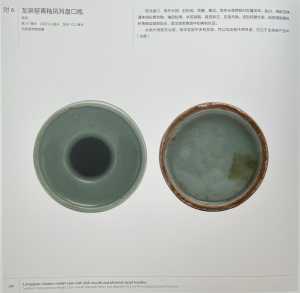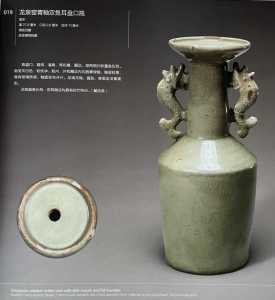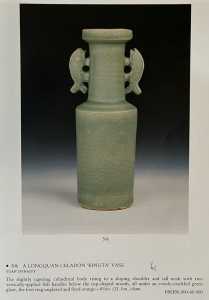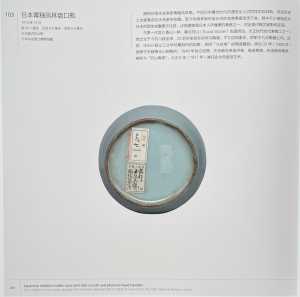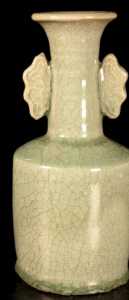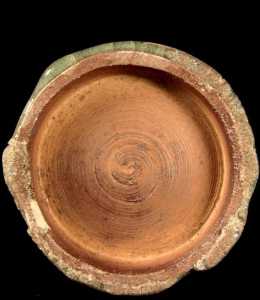The Chinese and Asian Art Forum. For Fans, Collectors and Dealers.
 Basic Rules For the BidAmount Asian Art Forum: Talk about whatever you want. You can even discuss and offer things that are for sale if they are authentic. Maximum image file size per post is 2 MB. Images of 700pxl x 700pxl are optimal if saved at a medium resolution. Be respectful of others and enjoy yourself. Click the YouTube link for a brief tutorial on using the forum. You can also EMBED Videos by cutting and pasting from You-Tube, Vimeo etc.
Basic Rules For the BidAmount Asian Art Forum: Talk about whatever you want. You can even discuss and offer things that are for sale if they are authentic. Maximum image file size per post is 2 MB. Images of 700pxl x 700pxl are optimal if saved at a medium resolution. Be respectful of others and enjoy yourself. Click the YouTube link for a brief tutorial on using the forum. You can also EMBED Videos by cutting and pasting from You-Tube, Vimeo etc.
NOTE: To post an item or add a new post, click open the category title from the FORUM LIST, and CLICK the Blue ADD TOPIC button.
Library is still closed. I have a similar vase. One at Sotheby's. Also some at museums I think...
Here are two mallet vases with lingzhi handles sold at Sotheby's. Longquan ware is genrally not suitatable for TL-testing as far as I know.
http://www.sothebys.com/en/auctions/ecatalogue/2016/chinese-art-hk0649/lot.672.html
@avatar Those links are really helpful! Thank you.
@superox Al, I think based upon the links that Vic posted, your vase is looking less likely of being genuine, sorry to say.
Again, I'm not a collector of these early wares, so I'm not well versed on variations in the design, but in general, when a design element is missing or added, it usually means the piece is not of the period, or even a fake.
In the case of your mallet vase, your ruyi handles are shaped rather sloppy compared to those in the links. Is this a variation in quality? Maybe, but I've always believed that quality is often a good indication of collectability and age.
Additionally, do you see your vase is missing a ring around its neck that is in the vases that sold at auction? That ring as meaning...I think it is derived from a design used in archaic vessels (arrow vases?). The fact that there is no ring is a concern.
Finally, you mention some concerns regarding the roughness of the foot rim. Things are adding up, don't you think?
Regarding my suggestion for a TL test... I would not do it. If the vase looked more like the ones sold at Sotheby's for $20,000-40,000, then of course.
However, given the quality and differences in design, either the vase is not of the period, or from a lesser kiln. In either case, the value would likely not support paying for the TL test.
If you intend to sell, b not testing, you can still offer the piece as 'possibly' being of the period without lying... let the buyer decide for themself.
All the best,
Tim
The first one Cory posted from Sotheby's looks the same style handles, the open handle.
@superpx
Hi Al -
Just for comparison of overall shape, glaze and, with the first four, footrim and bases, attached images/descriptions:-
1/2:- four similar, but not identical, examples attributed to Song to Yuan dynasties published in ‘Green - Longquan celadon of the Ming Dynasty’, National Palace Museum, Taipei. This exhibition included a number of Song, Yuan and Qing celadon examples, but this particular ‘mallet shaped’ vase is absent from the Ming entries …
3/4:- Another similar example recovered from the Sinan shipwreck, attributed 14th century, Yuan dynasty …
The Gugong, Palace Museum Beijing recently held a major exhibition on celadon wares, ‘Longquan of the World - Longquan Celadon and Globalisation’ in 2019, published in four volumes which includes much of the latest research into these wares. I have checked through these and, as with the above NPM publication, this ‘mallet-shaped’ vase form is absent from the Ming entries …
Although some overlapping in dating must always be allowed, the above would indicate your vase is either Song/late Yuan possibly, as @greeno107 implied, a lesser kiln example, or a much more recent copy of such, but certainly not Ming …
Also concur with Greeno re TL costs …
Stuart
@superpox
Hi Al -
Different handle type so, again, just for comparison:-
1:- Image/description Lot 509, Christies Hong Kong, 18 March 1991 …
2/3:- The Bishmon-do Temple vase, named ‘Bansei’, Japanese National Treasure, cited in above description, Lot 509 - apologies for image quality, old 1977 publication …
4/5:- Vase in NPM, Taipei, again cited in above description, Lot 509 …
Stuart
Hi Ming/Vic/Tim,
Thank you so much for this information. in regards with the ring, I have seen a few mallet vase without that circular ring near the neck. so does it mean that if you see a ruyi, then we kinda need to expect to see the circular band ?
I do not intend to collect museum piece (it would kill me financially 🤣 before i get to appreciate it) so when we say a lesser piece, do we mean that it was done in a provincial kiln ?
Here below is an auction from Bonhams here in Sydney. It did not sell for a lot but would you say a lesser piece is still authentic (but inferior piece) ?
https://www.bonhams.com/auctions/22263/lot/61/
Another thing that I would always want to understand is the weight of the piece.
I do have a few longguan ware and they do they to be quite "heavy" (if you know what I mean). If you drop one longguan bowl on your toes, most likely it will be your toe nails that will suffer! 🤣 ), This piece has a characteristically lighter in weight which is no where close to the density of a typical longguan ware. Longguan ware also tend to show that red burnish coloration.
The clay body of this piece has similar density to a yaozhou ware. One would not see a chisseld mark on a hard dense body of a longguan ware.
so can i safely conclude it is not a Ming piece based on this as by the time Ming pieces were developed, the body has significantly became more dense compare to the early ware of Song dynasty piece.
looking forward to your feedback.
Thanks!!
Al
Hello Guys,
Though not exactly the same piece, this is close the the finishing on the footrim compare to my piece.
the body is brownish colour.
https://www.bonhams.com/auctions/26127/lot/142/?category=list
Al
@superox Good morning, Al.
You asked:
"in regards with the ring, I have seen a few mallet vase without that circular ring near the neck. so does it mean that if you see a ruyi, then we kinda need to expect to see the circular band ?"
Then, in your next post you said:
Though not exactly the same piece, this is close the the finishing on the footrim compare to my piece.
the body is brownish colour.
I wish to address both.
Regarding your question, I think Stuart is your best source for a specific answer to this question because of his extensive knowledge and library. However, based upon my experience as a collector, if all known ruyi handled vases of a particular period (let's say Song) have rings around their neck, then the answer is, 99% yes.
Regarding using authentic vases that are 'not exactly the same piece' as a means to validate authenticity to a piece you are evaluating, this is the most dangerous of habits, it's a bad habit, and will most certainly lead you in the direction of buying fakes, and worse, put you in a position where you are defending its authenticity without imperical evidence.
Even in small minyao kilns, Chinese trades people were life-long (generational, really) craftsmen who learned their trade from the time they could likely walk, and practiced it until the day they died. Steaped in tradition, changes in style and originality were not rewarded as it is in modern times. This is probably true throughout the history of China up until the end of the Qing dynasty.
If changes in taste and style occured, it generally occured from the top down, from the Emperor, and eventually these changes trickled down to the everyday person.
So, when a particular object varies from the known taste, color, style, design, and physical composition of known examples, you are faced with three possibilities:
1) the piece is from the period, but a one of a kind
2) the piece is a new discovery of an unknown form
3) the piece is not from the period you believe
For the first to be true, generally the quality of the piece should be of exceedingly high quality... good enough that the emperor or a rich patron had the financial means and status to request a custom piece (one of a kind).
For the second to be true, you would have to be evaluating an object where the study is incomplete, or a relatively new area of study, and with Chinese antiques, there are very few and far between objects that would qualify.
This leaves the third option, and sadly, this is all too often the most reasonable and common explination.
Here is the important thing I would like you to remember and to avoid. Forgery predicates on the inclusion of a mix of physical features and artistic qualities to cause the everyday collector to like the overall artistic qualities of an object (beauty), and to provide enough physical evidence for them to link credible resources as possible evidence to justify variations in style.
You should avoid this trap. Try this...
Instead of trying to prove a piece is genuine and looking for reasons to support your confidence it's authentic, try proving it it's a fake or a later reproduction.
I think if you (and others) take this approach, you'll not only begin to fully understand how scarce authentic pieces are, but when you encounter a piece that you can find no fault, you will have likely encountered a valuable treasure.
All the best,
Tim
Hi Al -
Firstly, apologies for the delay in responding …
I can add very little to Tim’s @green107, excellent reply …
The major production centre for celadons was Longquan region, Zhejiang provenance. So far nearly 400 kiln sites have been excavated there, many of them ‘dragon kiln’ types, able to fire around 20,000 pieces at a time.
This gives some indication of the vast numbers of pieces produced, and why celadons were the pre-eminent export wares from the 12th/mid 15th century …
Due to there popularity and huge demand, many other kilns imitated/produced celadons, including numerous kilns Fujian provenance during the Song/Yuan dynasties, although these wares are generally inferior in terms of quality/workmanship, and also Guangdong provenance during the Ming dynasty …
In regards to the ‘raised circular neck ring’, and its ‘association to ruyi type’ handles, on all of the Song/Yuan pieces I have seen/found they are absent …
As mentioned, this ‘mallet-shaped’ vase does not seem to have continued in to the Ming period, and it seems absent/ unknown during the Qing …
However, excellent copies were produced in Japan by some of the leading artists/potters from the late 19th century; images 7/8 …
As in all periods/dynasties, differentials in overall quality certainly occurred including proportions, glaze tones, handle type, trimming and finishing. As Tim has mentioned, some of these differences were undoubtedly due to levels of patronage, individual potter/workshop skills, markets produced for and costs …
Attached images will, hopefully, show some of these …
1/2:- Vase, attributed to Southern Song, Qing Count Coll, Gugong, Palace Museum, Beijing
3/4:- Vase, attributed to Southern Song, The Songyang County Museum …
5:- Vase, attributed to Southern Song, Qing Court Coll, Gugong, Palace Museum, Beijing …
6:- Vase, attributed to Yuan, Lot 506, sold Christies, Hong Kong, 20 March 1990 for HK$65,000 …
7/8:- Japanese vase, made by Suwa Sozan, Tokyo National Museum …
Stuart
Hi Tim - and with apologies;
I inadvertently miss the ‘O’ out of your hashtag on the above post!!🤨🙄 …
Stuart
@ming1449 No need to apologize.. and BTW you're way too modest. You always put a fine edge of facts to the dullness of my generalities.
Thanks for visiting "The BidAmount Asian Art Forum | Chinese Art"
If you sell on eBay, or have a shop feel free to post images and descriptions and links.
Check back often for discussion about the latest news in the Chinese art and antique world. Also find out about the latest Asian art auctions at Sotheby's, Christie's, Bonhams and Tajans.
Auction results for: fine porcelain, ceramics, bronze, jade, textiles and scholar's objects. As well as Japanese, Thai, Vietnamese and other Asian cultures.
Thank you,
Peter Combs
Topics and categories on The BidAmount Asian Art Forum | Chinese Art
Kangxi vases, Kangxi dishes and chargers, Kangxi ritual pieces, Kangxi scholar's objects, Qianlong famille rose, Qianlong enamels, Qianlong period paintings, Qianlong Emporer's court, Fine porcelain of the Yongzheng period. Chinese imperial art, Ming porcelain including Jiajing, Wanli, Xuande, Chenghua as well as Ming jades and bronzes.
The BidAmount Asian Art Forum | Chinese Art
A free Asian art discussion board and Asian art message board for dealers and collectors of art and antiques from China, Japan, Korea, Thailand, Cambodia, Vietnam and the rest of Asia. Linked to all of the BidAmount Asian art reference areas, with videos from plcombs Asian Art and Bidamount on YouTube. Sign up also for the weekly BidAmount newsletter and catalogs of active eBay listing of Chinese porcelain, bronze, jades, robes, and paintings.
The art of calligraphy - and for the ancient Chinese it certainly was an art - aimed to demonstrate superior control and skill using brush and ink. Calligraphy established itself as one of the major Chinese art forms during the Han dynasty (206 BCE - 220 CE), and for two millennia after, all educated men were expected to be proficient at it.
The Museum’s collections of Asian art span nearly five millennia and encompass the cultures of China, the Himalayas, India, Japan, Korea, and Southeast Asia. In 2007, the Museum launched an initiative to create dedicated galleries for the collection, beginning with a gallery for the arts of Korea ...
Chinese art is full of symbolism, in that artists typically seek to depict some aspect of a totality of which they are intuitively aware.
China Online Museum is the finest online museum of Chinese art. It features Chinese calligraphy, painting, ceramics, bronzes, carving, and other artworks.
Chinese Ceramics & Works of Art. Overview Upcoming auctions Contacts Auction results ... Christie’s sales of Chinese ceramics and works of art showcase centuries of Chinese history. Held throughout the year in London, New York, Paris and Hong Kong, they attract a wide audience of collectors and connoisseurs vying for pieces as diverse as ...
Explore Asian Art Week. Contact the Specialist Department. Chinese Paintings ... Senior Specialist, Head of Sale. [email protected]. Tel:+1 212 641 5760. Bid in-person or online for the upcoming auction:Fine Chinese Paintings on 10 September 2019 at New York. Bid in-person or online for the upcoming auction:Fine Chinese Paintings on 10 ...
Discover an abundance of must-see art from all corners of a vast continent at Christie’s NY Asian Art Week. From contemporary classical and Chinese paintings to works with exemplary provenance from the Art Institute of Chicago, our Rockefeller Paza galleries will be full of ancient treasures and contemporary masterworks in a salute to the vibrant arts of Asia.
Sold to benefit The Art Institute of Chicago’s Asian Art Acquisition Fund, the sale features 84 lots with a focus on Ming and Qing porcelains, and offers a rare insight into the taste for collecting Chinese ceramics and works of art in the Midwest from the end of the 19th century through the 1980s. Highlights include two Wanli wucai garlic-head vases, a Qianlong mark and period, blue and ...
Specialist, Chinese Paintings, Christie's London Dr Malcolm McNeill is a Specialist in Chinese Paintings at Christie’s, based in London. He previously worked as an assistant curator of the Chinese collections and the Victoria and Albert Museum in London, as a researcher at the British Museum, and as a translator and tour guide at the National Palace Museum in Taipei.
The Christie's Education 2020 Conference: The Chinese Art Market 18 Jun 2019 Christie’s Education is delighted to announce our first international academic conference in Asia which will take place in Hong Kong from 26-27 November 2020 at the Hong Kong Convention and Exhibition Centre and will run in parallel with Christie’s Hong Kong Autumn Auctions.
The summer Chinese Art sale in Hong Kong will feature works of art from several private collections, including Qing porcelains and textile from the collection of the legendary Chinese art dealer A. W. Bahr (1877–1959), fine gilt bronze Buddhist sculptures from an old Hong Kong collection, an East Asian collection of Qing dynasty wine cups and jades, and a Japanese collection of Song ceramics ...
Sotheby's Chinese Works of Art Department holds two auctions each year in London, New York, Hong Kong and Paris.
Chinese Art - View Auction details, bid, buy and collect the various artworks at Sothebys Art Auction House.
With more than 340 Chinese works of art dating from the Neolithic to the Republic periods, highlights of this sale include a selection of Qing Imperial monochromes from the collection of Arnold and Blema Steinberg, early ceramics from the Art Institute of Chicago and Chinese porcelain and works of art from the collection of Henry Arnhold.
Results: Sotheby's Asia Week achieved $52.4 million in six strong auctions, exceeding pre-sale estimates. With 76.5% of lots sold and 60.3% of lots surpassing high estimates, the Asian art sales at Sotheby's indicate continued collector interest in the finest works of art from China, India and and the Himalayas.
Today's sale of Important Chinese Art will proceed as planned with sessions at 10 AM and 2 PM EDT. Sotheby's will be monitoring the weather conditions throughout the day and will be available to coordinate alternative bidding options should conditions make it difficult for clients to attend the auction in person.
Bonhams Chinese Art department is renowned for offering the finest works of art representing the richness and breadth of China's artistic heritage, particularly Imperial porcelain, white and spinach green jades, cloisonné and Buddhist art. Specialised international auctions are held globally, including London, Hong Kong and San Francisco.
Bonhams : Chinese Works of Art We use cookies to remember choices you make on functionality and personal features to enhance your experience to our site. By continuing to use our site you consent to the use of cookies. Please refer to our privacy and cookie policies for more information.
Bonhams Fine Art Auctioneers & Valuers: auctioneers of art, pictures, collectables and motor cars. We use cookies to remember choices you make on functionality and personal features to enhance your experience to our site. By continuing to use our site you consent to the use of cookies. ... Chinese Art (US) General enquiries
Bonhams : Fine Chinese Art We use cookies to remember choices you make on functionality and personal features to enhance your experience to our site. By continuing to use our site you consent to the use of cookies. Please refer to our privacy and cookie policies for more information.
Bonhams Fine Art Auctioneers & Valuers: auctioneers of art, pictures, collectables and motor cars Bonhams : Asian Art We use cookies to remember choices you make on functionality and personal features to enhance your experience to our site.
Bonhams are international auctioneers of fine Chinese and Japanese art. We specialise in rare Imperial and Export Chinese ceramics and works of art, as well as Japanese ceramics, fine and decorative works of art from the Neolithic Period to the 20th century. View on map
Bonhams Fine Art Auctioneers & Valuers: auctioneers of art, pictures, collectables and motor cars. We use cookies to remember choices you make on functionality and personal features to enhance your experience to our site. By continuing to use our site you consent to the use of cookies. ... Asian Art Bonhams. Work. 22 Queen St.
